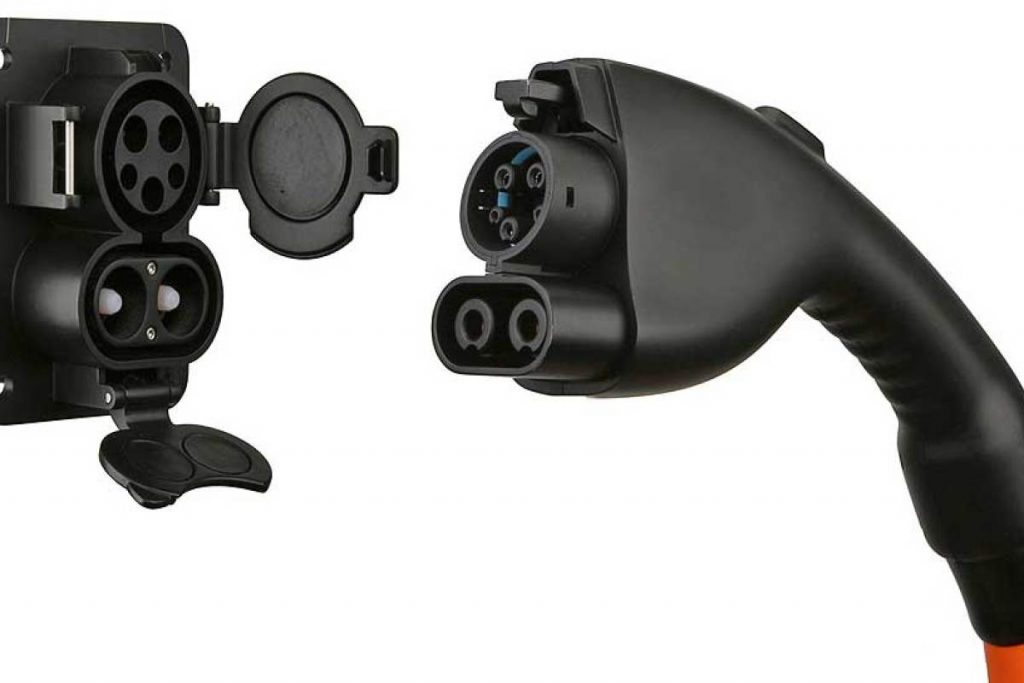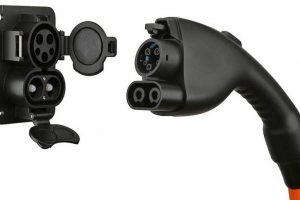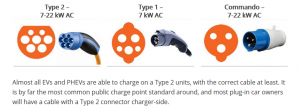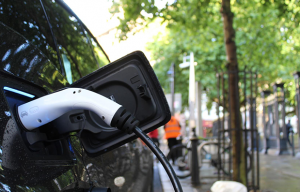
By APH
Range anxiety is still a big sticking point for a lot of people thinking about buying an electric car. If a driver leaves home with a full charge and for some reason, let’s say a diversion, an accident, or a last-minute change of plans forces them to overstretch their range. There are obvious questions? Will they be able to recharge their battery at a public charging station, and will the charge plug on their car fit the charging station they need to use?
Unfortunately, the answer to the question, are all-electric car charging plugs the same? Is a resounding, No. This may seem annoying and avoidable, but there are good reasons behind this, here we clear up the situation regarding electric car plug types.
Where can I charge my electric car?

First, some good news. Although public electric car charging points only started being installed in 2007, there are now more than 30,000 of them across the UK, in 11,000 different locations. This is one fact that is increasing the confidence in the viability of electric vehicles (EVs) among potential first-time buyers. With the increasing popularity of plug-in hybrid vehicles (PHEVs), and the shorter “rapid charge” times, worries about range are slowly starting to become less of an issue for potential first-time buyers.
That being said, the vast majority of electric car charging will be done at home. This is where full charges are carried out, sometimes lasting from 6 to 12 hours.
However, This doesn’t address those drivers who have to park on-street; but that’s for another article. Assuming you have a driveway and / or garage space, this is where you’ll plug in your EV or PHEV for its full range charge, probably overnight.
Are there different electric car plug types?
 Unfortunately, the short answer to this question is “yes;” there are different electric car plugs out there. A second question many people ask here is, “why?” Again, there are very good reasons for this, and it all boils down to a few things.
Unfortunately, the short answer to this question is “yes;” there are different electric car plugs out there. A second question many people ask here is, “why?” Again, there are very good reasons for this, and it all boils down to a few things.
The time taken to charge an electric car varies between manufacturers and models, as well as the different electric car plugs available. The time difference is due to the amount of electricity in kilowatts (kW) that the point can deliver, and how much your car’s battery can accept. This is why different configurations of charging plugs have been developed over time. However, it’s important to remember that all of them are safe; there’s no way you can overcharge your battery due to a rapid charging station. More likely, it will take longer to charge up from a lower kW charging station than you might like.
It may seem obvious, but every EV connector has two connecting points; one that attaches to the mains supply, and one that plugs into your car. These will not always be the same. Some chargers are tethered. This means that the mains connection is permanently connected, so you only need to consider the end that plugs into your car.
There are three different speeds that an EV can be charged. Slow, Fast and Rapid.
Slow chargers
Slow charging is usually done at home as you are parked up for longer periods, and your home does not usually have the power supply for anything faster. It is typically in the region of 3 kW to 6kW and can be tethered or untethered. There are 4 different connectors that can be used for slow charging. These are:

Every EV can be charged with at least one of the slow connectors at home—most commonly the Type 2, followed by type one, vehicle dependant. Slow charging is normally done overnight, as it takes 6 to 12 hours.
Fast chargers
Fast chargers are usually in the range of 7kW to 22kW and use both single and three-phase alternating current. Three-phase is not generally available in domestic locations. These types are chargers are usually located in areas where you will be parked for an hour or more such as supermarkets or car parks. They can be tethered or untethered and work on the following 3 connector types.

The most common charge port on public fast chargers is type 2. Nearly all EVs come with a cable that has a type 2 plug at the charger end. This is also the most common cable for slow charging, so it can be used in both scenarios. Fast charging takes in the region of 4 to 6 hours at 7Kw with a 40 kWh battery. In comparison, a 22kW charger will take 1-2 hours.
Rapid chargers
There are 4 different types of chargers that can be used for rapid charging. They are primarily Direct Current with the odd exception. Rapid chargers range from 43kW up to an incredible 350kW. All rapid chargers are tethered. The plug types are:

Rapid DC chargers are the most common in the UK as they have been installed for the last decade. They provide power at 50 kW using either the CHAdeMO or CCS plugs. Rapid DC chargers take 20 minutes to 1 hour to charge a battery to 80%.
Ultra-Rapid DC chargers provide power at 100 kW up to 350 kW. They are the next generation of rapid charge points and keep recharging times down despite battery capacities increasing. They will charge the newer longer-range EVs in 20-40 minutes for a typical charge.
Tesla’s Supercharger network also provides rapid DC charging to drivers of its cars, but use either a Tesla Type 2 connector or a Tesla CCS connector – depending on the model. These can charge at up to 150 kW.
Rapid AC chargers provide power at 43 kW and use the Type 2 charging standard. Rapid AC units are typically able to charge an EV to 80% in 20-40 minutes.
Priority at charging stations

There are different charging rates at public charging stations, depending on the kW delivered rather than the electric car plug types. This is something drivers should check out before leaving home, as well as an online map of what points are available where. As we have seen, for most people, a fast-charging plug will be the one to use at public charging stations, although Nissan Leaf owners will need a slow charger, which may be less readily available at public stations.
Partly because of the negative answer to “are all-electric car charging plugs the same?” there is now the potential issue of “charging etiquette;” who has priority at these stations. It is to be hoped that a driver with more need and less choice will be given priority; especially with the rise in popularity of PHEVs, it should be remembered that drivers of “pure” EVs don’t have their petrol or diesel engines to fall back on if they run out of power.
Certainly, what one should never do is unplug someone else’s car while it’s charging. Although there are visual displays telling you the car’s charge status, you should not assume that the car’s owner is “OK” with someone else unplugging their vehicle. Many people are new to driving electric cars, and those with experience may be able to offer constructive advice now and then. Hopefully, trying to insert the wrong type of plug won’t be a common problem.
